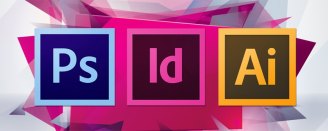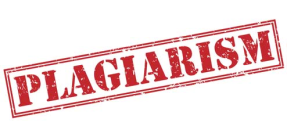1 Understand the use of digital technology within the Creative Media Sector
1.1 Describe the uses of digital technology within the Creative media sector and the relationships this has created between industries in the sector.
In modern day everyone now seems to be reliant upon Digital Technology, however in particular, Digital technologies have transformed the media industries for the better. For the Creative Media Sector Digital Technology has a much more important purpose for Marketing aspects. As well as to Record, Capture, Create, Edit, Enhance, Test, Display and Present.
The Creative Media Sector makes significant use out of a variety of software and applications for Marketing Purposes. This is because Social Media and Softwares are all able to be downloaded onto one device. There is a high demand nowadays for creativity and personalize. Whether this is targeting an audience “cross device” or using technology that can create greater personalized and more creatively focused content, be this on a desktop, mobile or tablet.
Software
Digital Technology provides the Creative Media Sector with a variety of software including Photoshop, Indesign, Dreamweaver and WordPress. This is where Graphics are made such as logos and banner animations, in order to distribute a brand or product. Photoshop is perfect for editing images and enhancing their quality. WordPress is predominantly used for Web Development. Here they can ensure that their services and content work across different devices and environments to suit the demands and expectations of consumers.

Social Media
Social Media is also a major use of digital Technology within the Creative Media Sector. Social Media is the perfect solution to not only use for Marketing purposes such as Advertisements but also to communicate in the workplace between colleagues. For example in my workplace at MediaVita we regularly use Skype to discuss meeting arrangements or potential clients visiting etc. E-mail is also a huge part of the Creative Media Sector as it is a useful and direct way to stay connected to loyal clients and offer them any extra information. It is also a much more personal approach to take in order to communicate with them. Social Media has also provided the opportunity for businesses to create a much larger network of partnerships within the Creative Media Sector. The Creative Media sector tends to use Social Media for a Marketing purpose as it allows businesses to extend their services and interact more with audiences.

Discovering an Audience
Digital Technologies have enabled Creative Media Sectors to take a Content led marketing and biddable media approach. This means that through the use of social media, Creative Media sectors can research from activity and traffic, what their audience likes, dislikes and wants to see more of. Therefore the Creative Media Sectors can roll out useful content that will lead to increased revenues for their brands. This is called ‘Organic’ research. Where readers will naturally click on a link to view what they have been looking for without any Advertisement encouragement
Bibliography:
Click to access Creative_Industries_Strategy_2013-16.pdf
1.2 Describe key Intellectual Property and Copyright issues, related to digital technology and content creation.
There are many different boundaries when it comes to the content creation and digital technology use within the Media Sector. The key Intellectual Property and Copyright issues surrounding Digital Technology include Copyright Infringement, Plagiarism, Privacy and Sharing.
Copyright

Copyright is a form of protection provided by law to the creators of original works, it is a right excluding others from copying every original creation made. Copyright protection across the world has become more difficult in recent years due to rapid technological advances that make content sharing extremely easy and inexpensive. This is due to a drastic increase in the use of internet-related platforms such as social media. The law simply enables content creators to monetize their original work and protects copyright holders against the unauthorized commercialization of their material. It provides a mechanism for copyright holders to protect their online content. This means that content posted in the creative media sector industry has to be original.
Plagiarism

Plagiarism is the practice of taking someone’s work or ideas and passing them off as one’s own. Nowadays Digital Plagiarism exists due to the rapid development of digital technology. ‘Copy and paste’ has now become the perfect gateway to sharing information without reference to the author. Copy and paste without reference to the originator defeats away from creativity in the media industry.
Steps to Avoid plagiarizing Content in the Marketing Industry:
- Don’t use Google Image search as a content tool – instead at Mediavita we subscribe to a royalty-free stock image service such as Shutterstock/pexels
- Use hyperlinks to refer readers to the original source – content owners will be happy if there is an increase drive of traffic to their site.
- When retweeting or sharing posts, the original source needs to appear prominently
- Avoid retweeting images or graphics
- Don’t copy and paste text – creative original content
Privacy

In general, privacy issues related to digital technology and content creation can be thought of in two senses: social privacy and data privacy. Recent advances in information technology threaten privacy and have reduced the amount of control over personal data and open up the possibility of a range of negative consequences as a result of access to personal data. For example one threat to privacy is the raise of so called hackers, which break into computer systems to illegally access data.
The development and use of technology brings new ethical problems which are mainly related issues such as the right of access to information, the right of privacy which is threatened by the emphasis on the free flow of information (freedom opportunity), and the protection of the economic interest of the owners of intellectual property. For example an audience has to be identified for content is created. This is because certain content may offend a reader’s beliefs, values or morals.
To ensure privacy in the creative media sector, it is crucial for Marketing agencies who are regularly producing online content to disable their ‘location’ settings and have secure passwords in place that aren’t easily accessible. Although in the modern digital technology world, there are also a growing number of software tools which are available and provide some form of privacy for their users. For example the development of software makes the decoding of digital information virtually impossible.
Sharing
Recent developments on the web and other aspects of digital media have made it increasingly possible for people to share their creations with others. Those who share their content publicly have the ability to set the agenda of public discussions and debates. Everyone seems to be engaging a lot more with the interactive aspects of digital media such as the creation of content and it’s sharing. As a result, ‘organic’ social promotion content is becoming outdated and instead it is shifting rapidly to paid promotion content being a trend in the creative media sector. This is because platforms such as Facebook, Twitter, and LinkedIn offer a range of increasingly sophisticated ways to reach the right people on viewing your content. There is also pressure with sharing in the creative media sector to maintain ambitious publishing schedules. For example there has to be consistency with the amount of content shared each time.
Bibliography:
https://www.dailytrust.com.ng/news/law/plagiarism-in-new-media/196863.html
http://www.shu.lu/plagiarism-digital-world/
http://mediasmarts.ca/digital-media-literacy/digital-issues/privacy/privacy-issues
https://plato.stanford.edu/entries/it-privacy/
http://web.simmons.edu/~chen/nit/NIT%2796/96-025-Britz.html
https://www.wordstream.com/blog/ws/2015/03/16/content-marketing-challenges
2.1 Explain what is meant by ‘Converging Technology’

The term Converging Technology simply refers to the combination of two or more different technologies in a single device/system. A good example is the convergence of communication and imaging technologies on a mobile device designed to make calls and take pictures – two unrelated technologies that converge on a single device.
The simple concept of convergence allows multiple tasks to be performed on a single device, which effectively conserves space and power. For example, rather than carrying separate devices – like a mobile, camera and digital organizer – each technology now converges on a single device, or smartphone.
Examples of Converging Technologies
- Calls, Texting and Photography
- Dating and Matchmaking – Dating is now conducted largely online, via sites and apps like Match.com, Tinder and many more
- Music – One under the control of a few studios, music is now available across many channels and providers. Apple is now the leading provider of music to customers around the world, through it’s iTunes store which can downloaded direct to smartphones
- Finance – Employees get direct deposit and pay for their bills online. E-comerce has also changed the way people pay for goods and services.
Bibliography:
https://www.techopedia.com/definition/769/convergence
http://searchconvergedinfrastructure.techtarget.com/definition/convergence
https://shape.att.com/blog/examples-of-convergence
2.2 Explain the impact of converging technology on the workforce within a specific Creative Media Industry
Creative Media Industry – Marketing Workforce
Convergence + Marketing
Technology convergence is the holistic convergence of big data/analytics, social, mobile and cloud. This combination of technologies, will provide the marketing industry with the tools they need to run faster with more efficiency, innovate and connect with their customers, partners and employees better and the utilize data in real-time.
Digital marketers face a vast array of choices when it come to choosing the marketing systems they will use. The key aspects that a modern digital marketer might be involved in are Social Media, Marketing Automation and Analytics. For each of these areas, there are many different platforms they could use. Including the follow: Advertising networks, Data management platforms, Monitoring and Analytics tools, Content delivery networks, Email marketing platforms and Search engine marketing goods. As a result, Converged Technologies have transformed the ways in which the Marketing Industry workforce action these platforms.
Digitally driven changes are affecting behavior in every area of our lives resulting in ‘Cross-Pollination’ of technology between our home life and our workplace. As home and mobile networking becomes more prevalent, people are increasingly relying upon social media for business purposes far more. Therefore the Marketing workforce has to communicate in a way which their customers prefer. This means face-to-face communications are replaced by an entire online existence.
Another impact that Converged technologies has had on the Marketing industry workforce is the amount of consumer behavior tracking that is carried out. Converged technologies has significantly increased the use of smartphones, where people will now choose to use in order to buy products, make payments etc. With the help of digital data collecting techniques and analytics in Marketing, marketers regularly and easily track consumer behavior and improvise their sales funnel. This allows marketers to make better market predictions.
Converged technologies not only presents opportunities for marketers to innovate and improve business operations efficiencies, it also enables them to connect with and engage their current and future customers and partners to drive revenue and value.
Bibliography:
https://www.marketing91.com/convergence-marketing/
https://www.itsma.com/convergence-what-does-it-mean-for-marketing/
http://www.digitalistmag.com/innovation/2014/08/06/impact-of-technology-convergence-01257734
3.1 Describe the changing expectations of audiences and consumers within a chosen Creative Media Industry
Customers have always wanted a friendly, efficient and reliable service, but with the development of new technology, their expectations have been raised, particularly in the Marketing Industry.
Online World
In today’s world we’re each connected to an instant feed of live updates, breaking news and messages. We can post something on social media and get instant feedback from friends. This has effectively sped up the time consumers expect it to take a brand (or anyone) to reply to a message.
Secondly a quick Google search can tell you just about anything you need to know nowadays. As a result, consumers have little patience when Marketing companies simply don’t know something. Consumers expect data to be at Marketer’s fingertips – from accurate SEO Ranking results to Print design delivery dates.
Social Media
Social media has made it easier than ever before for consumers to share their thoughts with a wide audience. Even the average consumer is connected to at least 150 people on Facebook and to around 140 people on Twitter. Today, companies have to tackle an audience with audiences. All of this has led to many consumers feeling more empowered. They know if they complain publicly on social media, they’re likely to get a better response than if they complain privately.
With social media, everything is out there in the open. This ‘open book’ approach to socializing has led to an expectation that brands should be monitoring any mentions on social media and responding accordingly. Consumers expect brands to be listening and ready to respond, no matter if it is a direct complaint, a message or just a mention.
Personalized Service
The whole online experience is now personalized – from social media to the way Google personalizes our search results. Consumers expect the workforce in the marketing industry to remember them – they expect to be treated as an individual and not as just another customer. In practice, this means that Marketers need to have access to their whole communication history, buying habits and preferences
Self Service
Consumers are now more willing than before to try and solve their problems themselves. Particularly in the Marketing industry, FAQ pages and User guides are heavily relied upon, for consumers to attempt to make their own changes to their website or blog themselves.
The ‘Always On’ Culture
We live in an age where virtually everyone has a smartphone in their pockets, connecting them to just about every aspect of their lives. For marketers, their device will always be on and always connected which means bringing back work into their home life. Therefore consumers don’t expect to have to break this habit for a business. While 24/7 call centers may not be possible, consumers expect longer opening hours and weekend support.
Bibliography:
http://www.icmi.com/Resources/Customer-Experience/2015/07/10-Trends-Changing-Customer-Expectations
https://www.sykes.com/blog/changing-customer-journey-will-change-marketing/
https://marketingland.com/evolution-digital-marketing-changing-client-expectations-159444
3.2 Describe examples of how ideas for multi-platform content have been used to reach new audiences and generate revenue
One example is the Tracking of consumer behavior. The Marketing industry particularly uses this idea in order to make better predictions as to what their consumers are looking for and are attracted to. This reaches new audiences and generates revenue for them because it enables Marketers to personalize their consumers’ services because they can view their buying habits and then advertise the products that they have been browsing or have bought something similar to. Therefore they are more likely to invest in the advertised products. Consumer behavior can be tracked using Analytics and Data.
Another example is featuring advertisement campaigns across multiple platforms. Such as in 2016, Channel 4 deployed a creative marketing campaign to announce the season two premiere of popular sci-fi show Humans. It consisted of print ads run in newspapers, a video recall ad, a website, and social media channels for the fictional company, a Facebook chat bot acting as a technical support Synth to help answer questions quickly, a faux ebay shop, and even Synthetic Human Collection service trucks that were deployed in several cities. The best thing about this multi-platform campaign was the attention to interactive detail in the story construction. This idea of course generated bigger audiences and more revenue towards the sci-fi show Humans once it was launched.
At MediaVita where I work, the second branch of our business was launched recently called ‘MotionVita’, which offers Aerial drone photography and videography. This idea is used to generate audiences and revenue as it is the current latest trend within Marketing and Promoting brands. Successful Youtubers are also widely known to use such Drone devices for their own filming creations. Therefore this draws much bigger audiences to use Drone services. This is because Drone footage can be transferred onto a multi-platform range, making it easily accessible for every client.
Finally Social Media is a multi-platform idea in order to generate more audiences and revenue.This is because Social media sites draw such a wide variety of driven traffic which means it is a simple, quick and easy way for audiences to reach new advertisements or campaigns. Convergence of technologies has had an impact on the demand for social media because it has encouraged the investment of smartphones. This is because smartphones have converged technology applications such as social media, photography and videography tools
Bibliography:
http://www.thedrum.com/opinion/2014/06/06/five-tips-cross-platform-advertising-success

3.3 Describe examples of commissioning processes and funding opportunities in relation to converging technology
Commissioning Processes
Firstly commissioning is a process that public sector organisations use to plan, procure, deliver and evaluate services for local residents. A good example would be the commissioning process for TV. For instance the BBC strictly allocate a certain amount of their funding to independent new media suppliers, for new tendering opportunities. The BBC work with a broad and diverse range of suppliers across the UK, in order to deliver distinctive world-class content for their audiences.
Their suppliers are commissioned on the quality and relevance of their idea, it’s fit with current editorial strategy and the supplier’s ability to deliver. One of their guidelines for new material by the BBC is to make sure that the ideas aren’t already in use on other websites.
Funding Opportunities
A recent funding opportunity related to converging technology is the use of advertisements to generate revenue in converging digital media. This is very popular on free streaming sites like YouTube, where sponsored ads make up a large percentage of their revenue. Compared to Netflix who don’t use advertisements due to the fact you are already paying the premium in a monthly subscription.
Another funding opportunity in the creative media industry is the development of downloadable content, or in-app purchases. For example this idea aims to hold back the release of specific content or applications for a mobile game, to then be launched on a later date but at an a agreed price.
Funding opportunities in relation to converging technology also include Donations from individuals and companies. For example, the area of technology innovation, the EU Provides the media industry with funds for innovative technologies. These technologies enable new ways of experiencing media content that are more personal, participate and interactive.
Bibliography:
http://www.bbc.co.uk/commissioning/tv/articles/who-we-are-how-we-commission
http://www.bbc.co.uk/mediaaction/about/funding
4.1 Explain Opportunities for exploiting Converging Technology
We now live in a digital world where consumers rely heavily on the use of smartphones and digital devices. This causes exploitation of poor members in society who are excluded from accessing converged technologies compared to the wealthier generations.
A wide range of in-apps have now been introduced on our smartphones which feature more advertisements nowadays than ever before. These advertisements exploit audiences and change the ideas they make and how they should perceive things. Another example of exploitation is through the use of geographical locations. This gives Creative industries the opportunity to use internal data software to monitor a person’s location through GPS signal. This helps Creative Industries to determine their audience’s preferences, however it breaches a consumer’s privacy.
For example Google Analytics software is what Creative industries use to track a consumer’s behavior. It then keeps a record of recovered of behavior and actions made by a consumer, in order to help them make predictions and analyze trends. It determines what website pages they have clicked on, the amount of time they spend on a website and the browser they are using/sized screen. This then also breaches a consumer’s privacy.
4.2 Research and Plan a test for an identified opportunity
Due to our MotionVita Wedding package competition getting such a great response on our social media, on behalf of the MediaVita team I am using the opportunity to create eye-catching content to potentially feature in our very own column in the ESSEX COUNTY WEDDING MAGAZINE. As well as make it accessible to read as a virtual flipbook, due to the younger generation being completely immersed on their phones and other technology nowadays.
To test whether this would be beneficial for MediaVita or not, we needed to carry out research to find out how much of a latest fashion trend Drone Photography packages for weddings actually are. I chose to schedule a Poll question on our Twitter and Facebook pages to gather data and statistics as to how many people would be interested in having a drone photography package at their wedding. This way we could monitor insights on the posts such as the amount of ‘Likes’ ‘Shares’ and ‘Comments’ to support our research.
In order to promote MotionVita, our potential magazine column would need to feature a collection of wedding drone photography case studies. To develop our case studies of wedding venue drone photography I have organized to contact Prested Hall in Kelvedon to ask for their permission for our Drone pilots to carry out a drone shoot of their venue grounds. To support this I have created an information sheet detailing our MotionVita services and the type of packages we can offer, in order to persuade them.
4.3 Carry out planned test and evaluate and present the findings
Following up from a call with the local venue Prested Hall, I was able to get permission for our drone pilots Lee and Anthony to carry out a Drone shoot there to build our Wedding Photography Package case studies. The drone shoot was successful and we were able to capture some really effective snap shots of the Venue grounds and building.
I managed to create a first draft of our potential Essex County Wedding magazine column content and then got it refined by our directors Lee and Anthony to confirm it was ok to send off. The magazine company sent over a confirmation email back with a magazine release date that our content will feature in. This has been beneficial for MotionVita as it has helped us reach a vast amount of people who are likely to be interested in using our Wedding photography packages.




